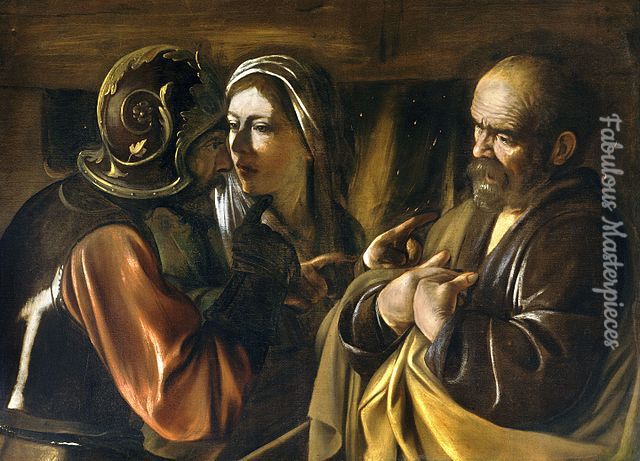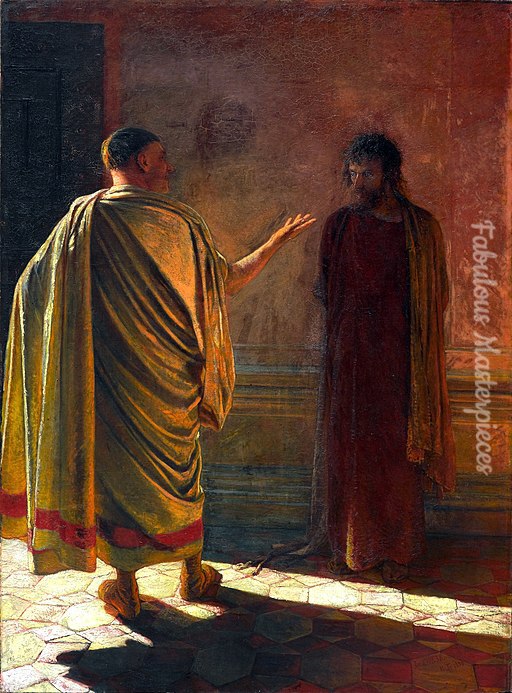As Easter is only a month away, we decided to celebrate by compiling 19 of the most famous Easter paintings that tell the story of Easter through art in order.
The Last Supper is the meal that Jesus shared with his disciples before he gets betrayed, arrested and crucified. It is the scriptural basis for The Eucharist. The gospels tell us at the Last Supper, Jesus predicts that one of his disciples will betray him, and that Peter will deny knowing him 3 times. Da Vinci’s Last Supper painting is currently housed in the Santa Maria della Grazie in Milan and measures 460cm x 880cm. You can of course buy a faithful hand painted fine art reproduction of it here – Easter Paintings at a sizing of your choosing.
In the Roman Catholic Church, the Agony in the Garden is the first Sorrowful mystery of the rosary and the First Station of the Way of The Cross. In this famous Easter painting you can see Jesus praying in the garden of Gethsemane after the Last Supper whilst the disciples sleep and Judas leads the mob.
The kiss of Judas, also known as the Betrayal of Christ, is how Judas identified Jesus to the mob who had come from the chief priests to arrest him. You can take a look at some of our replica Caravaggio paintings here. This religious Easter artwork is actually our hand painted fine art reproduction of Caravaggio’s Betrayal of Christ. If you’re fan of Caravaggio, take a look at our Caravaggio art reproduction examples by our two copy artists.
In this famous religious Easter painting we see The Sanhedrin trial of Jesus, which refers to the trial of Jesus before the Sanhedrin (a judicial body).
Jesus predicted that Peter would deny knowledge of him, stating that Peter would disown him before the rooster crowed the next morning. The gospels tell us that Peter did indeed deny Jesus 3 times and when he realised what he did he cried. This is known as the repentance of Peter. In this famous Easter painting we can see Peter denying Christ to those that ask him.

Above is Caravaggio’s interpretation of the denial of Saint Peter, which Denial of Saint Peter painting do you prefer? Segher’s or Caravaggio’s? You can of course commission a reproduction oil painting of either on our Easter Paintings page.

Ge’s What is truth? painting shows an arrogant Pilate asking Christ: “What is truth?” he looks as if he already knows the answer. A beam of light separates the two figures.
This famous Easter painting depicts Pilate presenting Christ to the people of Jerusalem. It is generally assumed (based on the gospels) that the crime for which Jesus was brought to Pilate and executed was sedition, founded on his claim to be king of the Jews.
The flagellation of Christ is a scene from the Passion of Christ very frequently shown in Christian religious art. It is also the fourth station of the modern alternate Stations of the Cross.
According to three of the Gospels, a woven crown of thorns was placed on the head of Jesus during the events leading up to the crucifixion of Jesus. In El Greco’s famous religious Easter painting we see Jesus carrying the cross whilst wearing the crown of thorns.
The above Easter painting is Titian’s interpretation of Christ carrying the cross. Painted in 1565, Christ carrying the cross is housed in the Prado in Spain. Christ is painted with a tearful gaze staring straight at the viewer, we can see the rope around his neck, the crown of thorns and droplets of blood on his face. Simon of Cyrene is also shown in this artwork as helping Jesus carry his Cross.
Raphael’s Christ falling on the way to Calvary, shows the iconic moment when Jesus falls and his mother, Mary suffers a spasm of agony, also known as the swoon of the Virgin. It measures 318 cm × 229 cm (125 in × 90 in) and the original artwork is housed in the Prado in Spain.
What is interesting about Bruegel The Elder’s Procession to Calvary is that everybody with the exception of Jesus is in contemporary dress as Bruegel clearly wanted to make a reference to his own day. Calvary is a another name for the Golgotha hill, which the gospels of Mark and Matthew both translate Golgotha as the place of the Skull – A place outside of Jerusalem’s walls where Christ was crucified.
The Crowning of Thorns is a painting by Caravaggio based on the gospel of Matthew.
“And they stripped him and put a scarlet robe upon him, and plaiting a crown of thorns they put it on his head, and put a reed in his right hand. And kneeling before him they mocked him, saying, ‘Hail, King of the Jews!” (Mt 27:27-29).
Caravaggio’s Crowning of Thorns is located in the Kunsthistorisches Museum, Vienna and was painted c. 1607, it measures, 127 cm × 165.5 cm (50 in × 65.2 in). Pain and sadism is central to the theme of this artwork.
Christ Crucified was painted by Velazquez (1599-1660) in 1632 and is housed in the Prado, Madrid. Christ here is pale and has ben painted with a divine sense of beauty, the influence of Classicism is very evident.
What is striking about this Easter painting of French artist, Tissot’s Crucifixion is that it portrays the bystanders and women witnesses and doesn’t show us Christ on the cross, which is the norm for Crucifixion paintings. Usually, like Velazquez’s Christ Crucified as seen above, Christ is of course painted as the central figure but here in Tissot’s painting, the only thing you can see of Christ is his feet.
The gospels tells us that Joseph of Arimathea removed Christ from the Cross with Nicodemus assisting. “Joseph immediately purchased a linen shroud (Mark 15:46) and proceeded to Golgotha to take the body of Jesus down from the cross”. Rubens’ The Descent from the Cross (1617) is currently housed in Palais des Beaux-Arts de Lille.
After Christ’s crucifixion, we know that some of his disciples and his mother, Mary took him down from the cross and placed him in a tomb. What is striking about this painting, is that there is no landscape, no architecture, just darkness. There’s a word for this: tenebroso, which means dark style. This has the desired effect of making us, the viewer focus on the figures of the painting and the action, which is all happening in the foreground. If you look at Jesus’ body it has been painted so you feel you could nearly touch it, and the figure in orange holding Christ’s legs, his elbow looks as if it is coming out of the painting. This is a characteristic of Baroque painting, where the artist tries to breakdown the space between painting and viewer, so we feel more part of the painting.
The Gospels state that after Jesus was crucified and lay in a tomb between Friday evening and Sunday morning, he rose from the dead and appeared alive to his disciples. In Piero della Francesca’s Resurrection, we can see that Christ has been depicted as both man and God. Jesus has been painted with an unidealised face yet his body has been painted as if it was a sculpture, without blemishes. This Easter resurrection painting is also unusual because it has two vanishing points.
We’d love to hear from you! If you would like to add something, or ask a question concerning art reproductions please leave a comment below or email: [email protected].
We’re a fine art reproduction company called Fabulous Masterpieces that solely concentrates on painting museum quality art reproductions onto canvas. We’ve even produced a magazine on the topic to help you out if you want to learn more about fine art copies. Just click on the image above.
Bye for now!
Anna X
Leave a Reply